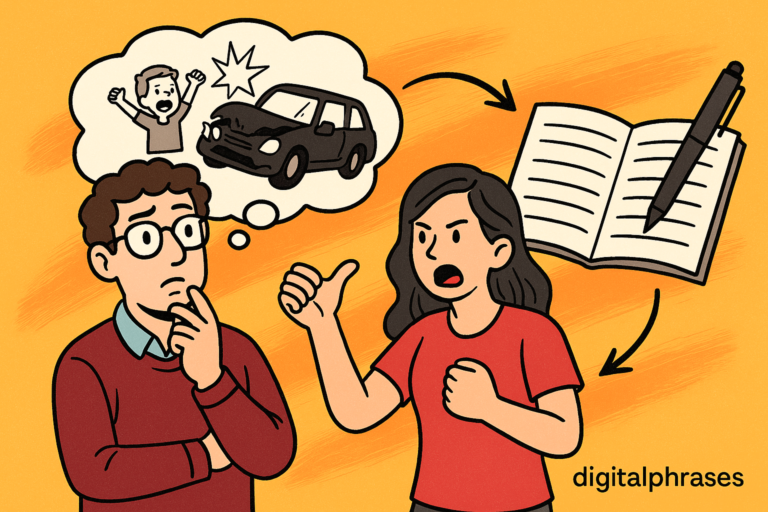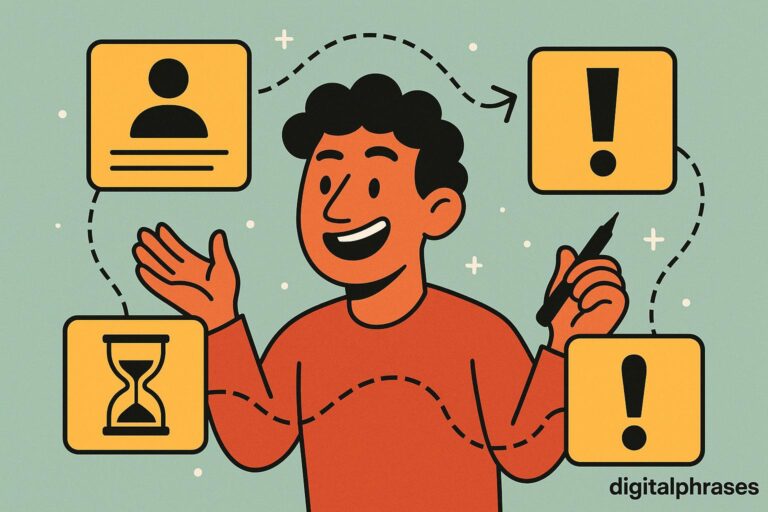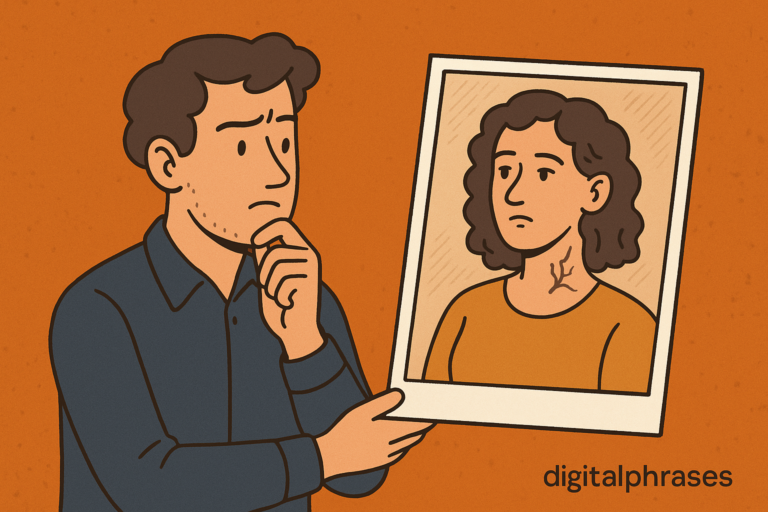7 Plot Twists That Readers Hate
You already know a great twist can make a story unforgettable—but let’s be real, not all surprises are created equal. Some twists leave readers breathless; others leave them rolling their eyes or (worse) throwing the book across the room.
And the thing is, bad twists aren’t usually technically wrong—they often stem from a well-intentioned desire to shock. But when that shock comes at the expense of narrative logic or emotional payoff, readers feel betrayed, not impressed.
Take Gone Girl, for example—Flynn doesn’t just drop a twist out of nowhere. She meticulously lays the groundwork, trusting the reader to connect the dots after the reveal.
Compare that to something like the final season of Game of Thrones, where Daenerys’ sudden flip into full-blown villainy felt unearned to a lot of viewers. The setup was there, sort of, but not in a way that respected the emotional investment fans had made.
Here, I want to unpack the kinds of plot twists that readers hate—the ones that break trust, not just expectations.
Even if we think we’d never make those mistakes ourselves, I think there’s value in breaking them down. Let’s get into it.
The Psychology of Reader Reactions to Plot Twists
So, why do some plot twists thrill us while others make us want to quit the book entirely?
It all comes down to reader psychology—how people process stories and what they expect from them, whether they know it or not.
Readers are constantly building mental maps of your story. They track patterns, pick up on cues, and form subconscious expectations about how things will unfold.
When you twist the story in a way that aligns with what they didn’t even realize they were expecting, that’s the sweet spot. That’s when they go, “Wait—what?! Oh my god, that makes so much sense now.”
But when a twist comes out of left field with no groundwork? It doesn’t feel clever. It feels cheap. Readers don’t hate being surprised—they hate feeling tricked.
A good twist feels inevitable in hindsight. You can’t just slap on a shock ending and call it brilliance. Think about The Sixth Sense—we didn’t see it coming, but the clues were all there.
That’s why people rewatch it. They want to see how the story earned it. Compare that to something like Now You See Me, where the final twist feels more like a magic trick with no setup. Impressive?
Maybe.
Satisfying?
Not really.
The bottom line: surprise alone isn’t enough. A twist has to honor the internal logic of the story and reward the reader’s attention. If it breaks the emotional contract—if it feels like the writer is showing off rather than telling a great story—then you’ve lost them.
That tension between unpredictability and payoff?
That’s where the magic happens. And when it’s done right, it doesn’t just surprise—it redefines everything that came before it.
The Most Hated Plot Twists (and Why They Fail)
We’ve all seen a story twist that made us go, “Seriously?”—and not in a good way.
The kind that doesn’t just miss the mark but leaves readers feeling like their time (and emotional investment) was wasted.
These twists aren’t just disliked because they’re surprising or upsetting; they’re hated because they violate the rules of the world, the characters, or the reader’s trust.
Let’s break down the worst offenders—not just what they are, but why they fail so hard.
1. “It Was All a Dream”
This one’s the king of cop-outs. When a story builds tension, stakes, and emotional arcs, only to pull the rug out with “Surprise! None of it was real,” it doesn’t feel clever—it feels like the writer just hit reset to avoid consequences.
Why readers hate it: It invalidates everything that happened. All that emotional investment? Gone. It turns the entire narrative into a waste of time. It also destroys character arcs—because what arc?
Example: Remember Dallas in the ‘80s? That infamous season where Bobby Ewing was revealed to be alive because the whole previous season was a dream? Audiences were furious, and the show’s credibility never fully recovered.
2. The Out-of-Nowhere Villain
Done right, a hidden antagonist can be thrilling. Done wrong, it feels like the author just spun a wheel and picked someone random to be the “bad guy.” If there’s no foreshadowing, no clues, no buildup? Readers feel blindsided in the worst way.
Why readers hate it: It feels like a cheat code—like the author didn’t want to do the heavy lifting of setting it up properly. It breaks immersion and makes readers question everything that came before, but not in a satisfying way.
Example: In Sherlock (BBC), the reveal of Eurus Holmes—Sherlock’s secret sister—was jarring for many viewers. No mention, no buildup, no emotional groundwork. Just a shocking reveal that felt like it was written for pure shock value rather than narrative sense.
3. Character Betrayals with No Setup
When a beloved character suddenly flips—becomes the traitor, villain, or worst version of themselves—it can be powerful. But only if the seeds were planted. Without emotional groundwork, it feels like personality whiplash.
Why readers hate it: Readers feel betrayed alongside the protagonist. And not in a “wow, that was impactful” way, but in a “this character I cared about was destroyed for shock value” way.
Example: Daenerys in Game of Thrones. The Mad Queen arc could have worked—but the speed and lack of internal logic turned a potentially powerful turn into a meme-worthy disaster.
4. Last-Minute Info Dumps
A twist that hinges on information the reader had no access to until the very end is like springing a surprise test on someone who never got the textbook.
Why readers hate it: There’s no way to “play along” or connect the dots. The twist doesn’t feel like a reward—it feels like being excluded from the story’s inner circle.
Example: In Now You See Me, the reveal that Mark Ruffalo’s character was the mastermind all along felt hollow to many because there were zero breadcrumbs leading there. It felt like a stunt, not a story.
5. The “Dead” Character Who Wasn’t
If death means nothing in your story, neither do the stakes. Faking a death for shock value is risky, and if it’s not earned, it just kills the tension moving forward.
Why readers hate it: It messes with emotional payoff. They mourned a character, only to find out the grief was manufactured. The next time someone “dies,” they’re less likely to care.
Example: The Rise of Skywalker. Palpatine’s return—without real explanation—undercut Return of the Jedi’s emotional weight and the entire point of Anakin’s arc. It wasn’t epic. It was lazy.
6. Genre-Breaking Supernatural or Sci-Fi Elements
You’re reading a grounded mystery, and suddenly—aliens. Or ghosts. Or time travel. Unless that was seeded from the start, a sudden genre shift feels like narrative whiplash.
Why readers hate it: It breaks immersion and reshapes the entire story’s rules, often without warning. It makes everything that came before feel irrelevant or mismatched.
Example: Remember Me, the 2010 romantic drama that suddenly ends with the 9/11 attacks? That twist had nothing to do with the story’s setup and left audiences feeling manipulated, not moved.
7. Twist for Twist’s Sake
This one’s tricky because it’s a tonal issue more than a specific plot device. If a story constantly tries to one-up itself, pulling twists just to be “clever,” it stops being about the story and starts being about the author showing off.
Why readers hate it: It feels performative. Readers stop engaging with the narrative emotionally and start playing defense, waiting for the next “gotcha.” That’s not suspense—it’s exhaustion.
Example: The Happening by M. Night Shyamalan. The premise twist—that the plants were killing people—wasn’t inherently bad, but the way it was delivered felt absurd, not chilling. It became the punchline instead of the reveal.
Here’s the real takeaway: a bad twist doesn’t just disappoint—it erodes trust. And once that trust is gone, it’s hard to get it back. Expert readers don’t just want to be surprised; they want to feel like the twist enhanced the story, not derailed it. So if a twist doesn’t serve the characters, the world, or the emotional truth of the story—it probably doesn’t belong there.
You don’t have to avoid twists. Just make sure they’re not hollow. Earn the reveal, and your readers will love you for it. Cheat them, and they’ll remember—and not in a good way.
Instead, Try Out These Plot Twists
Alright, so we’ve talked about the twist landmines—now let’s flip the script. Because when done right, plot twists aren’t just fun—they’re powerful tools for deepening character, theme, and reader engagement.
The trick?
They need to feel surprising and inevitable. The best twists reframe everything that came before them without feeling like they were tacked on.
Here are five kinds of twists that work, why they hit hard, and how to make them sing in your own writing:
1. The Reveal That Changes the Hero’s Motivation (But Not the Character)
This twist recontextualizes a character’s actions without rewriting who they are. The reader sees everything they’ve done in a new light—but it still tracks with the character’s internal logic.
Why it works: It rewards close reading and adds emotional depth without pulling a personality 180.
Example: In The Prestige, when we find out that Christian Bale’s character has a twin—and they’ve been alternating lives—it doesn’t undermine the story. It deepens it. Everything they did makes more sense now. The obsession, the sacrifices—it was all baked in.
Pro tip: Drop hints through behavior inconsistencies or emotional tells. Let the reader feel like something’s off, even if they can’t name it.
2. The Protagonist Was Wrong the Whole Time (But Believably So)
Instead of yanking the rug out, this twist slowly pulls the reader’s assumptions out from under them—right alongside the protagonist’s.
Why it works: It puts readers inside the character’s confusion, making the twist feel earned and immersive.
Example: Shutter Island. DiCaprio’s character is convinced he’s solving a mystery—but he’s actually the one being treated. The clues were there, but we only connect them after the reveal. It’s shocking, sure—but it’s also heartbreakingly logical.
Pro tip: Seed reality-check moments that feel insignificant early on. When the twist lands, readers will want to go back and trace the truth.
3. The Ally’s Betrayal That Actually Hurts (Because It Makes Sense)
We’re not talking about random “they were evil all along” twists. This is betrayal with emotional stakes—where the reader gets why the character did it, even if they’re devastated by it.
Why it works: It adds complexity. Morally grey decisions resonate deeper than pure good vs. evil.
Example: In The Hunger Games: Mockingjay, when Gale confesses his role in the bombing tactic that killed Prim, it’s a gut punch. He wasn’t trying to hurt Katniss—but his strategic mindset crossed a line. It’s believable. And brutal.
Pro tip: Build tension between loyalty and ideology throughout the story. The betrayal should feel like the logical next step, not a random turn.
4. The Twist of Perspective (You’ve Been Looking at It Wrong)
This one plays with narrative framing, revealing that what we thought was the truth was just one version of it.
Why it works: It flips the emotional tone of the story without changing the facts—just the context.
Example: Atonement. When we find out the happy ending we just read was Briony’s fictional version—and the real lovers died during the war—it’s devastating. But it doesn’t feel like a trick. It forces us to reexamine storytelling itself.
Pro tip: Use unreliable narrators or filtered storytelling carefully. The goal isn’t to lie to the reader—it’s to let the reader realize they wanted to believe the lie.
5. The “Villain” Has a Point (and the Hero Knows It)
This twist doesn’t change what the antagonist did—it changes how the reader and protagonist feel about it.
Why it works: It introduces moral complexity without rewriting the story’s core events. It leaves readers questioning themselves, not just the characters.
Example: Black Panther. Killmonger’s methods are extreme, but his core grievance—colonialism, injustice, cultural erasure—is valid. T’Challa realizes this, and it changes how he leads. The twist isn’t about who’s right or wrong; it’s about the cost of every choice.
Pro tip: Make your villains ideologically sound but emotionally volatile. Let the protagonist evolve because of them, not just in opposition to them.
Before You Leave
Great twists don’t just flip the plot—they deepen everything. They change the way readers interpret the story, but without undoing the story itself. So if you’re going to twist, twist with purpose. Make it count, make it hurt (in the best way), and make sure your readers feel like they should’ve seen it coming—but didn’t.






